The Not So Short
Introduction to LATEX 2ε
Or LATEX 2ε in 131 minutes
Hubert Partl, Irene Hyna and Elisabeth Schlegl
by Tobias Oetiker
Version 4.13, 10 September, 2003
�
ii
Copyright ©1995-2002 Tobias Oetiker and all the Contributers to LShort. All
rights reserved.
This document is free; you can redistribute it and/or modify it under the terms
of the GNU General Public License as published by the Free Software Foundation;
either version 2 of the License, or (at your option) any later version.
This document is distributed in the hope that it will be useful, but WITHOUT
ANY WARRANTY; without even the implied warranty of MERCHANTABILITY
or FITNESS FOR A PARTICULAR PURPOSE. See the GNU General Public
License for more details.
You should have received a copy of the GNU General Public License along with
this document; if not, write to the Free Software Foundation, Inc., 675 Mass Ave,
Cambridge, MA 02139, USA.
�
Thank you!
Much of the material used in this introduction comes from an Austrian in-
troduction to LATEX 2.09 written in German by:
Hubert Partl
Zentraler Informatikdienst der Universität für Bodenkultur Wien
Irene Hyna
Bundesministerium für Wissenschaft und Forschung Wien
Elisabeth Schlegl
in Graz
If you are interested in the German document, you can find a version
updated for LATEX 2ε by Jörg Knappen at
CTAN:/tex-archive/info/lshort/german
�iv
Thank you!
While preparing this document, I asked for reviewers on comp.text.tex.
I got a lot of response. The following individuals helped with corrections,
suggestions and material to improve this paper. They put in a big effort to
help me get this document into its present shape. I would like to sincerely
thank all of them. Naturally, all the mistakes you’ll find in this book are
mine. If you ever find a word that is spelled correctly, it must have been one
of the people below dropping me a line.
Rosemary Bailey, Marc Bevand, Friedemann Brauer, Jan Busa,
Markus Brühwiler, Pietro Braione, David Carlisle, José Carlos Santos,
Neil Carter, Mike Chapman, Pierre Chardaire, Christopher Chin, Carl Cerecke,
Chris McCormack, Wim van Dam, Jan Dittberner, Michael John Downes,
Matthias Dreier, David Dureisseix, Elliot, Hans Ehrbar, Daniel Flipo, David Frey,
Hans Fugal, Robin Fairbairns, Jörg Fischer, Erik Frisk, Mic Milic Frederickx,
Frank, Kasper B. Graversen, Arlo Griffiths, Alexandre Guimond, Andy Goth,
Cyril Goutte, Greg Gamble, Neil Hammond, Rasmus Borup Hansen,
Joseph Hilferty, Björn Hvittfeldt, Martien Hulsen, Werner Icking, Jakob,
Eric Jacoboni, Alan Jeffrey, Byron Jones, David Jones,
Johannes-Maria Kaltenbach, Michael Koundouros, Andrzej Kawalec,
Sander de Kievit, Alain Kessi, Christian Kern, Jörg Knappen, Kjetil Kjernsmo,
Maik Lehradt, Rémi Letot, Johan Lundberg, Alexander Mai, Martin Maechler,
Aleksandar S Milosevic, Henrik Mitsch, Claus Malten, Kevin Van Maren,
Philipp Nagele, Lenimar Nunes de Andrade, Urs Oswald, Demerson Andre Polli,
Maksym Polyakov Hubert Partl, John Refling, Mike Ressler, Brian Ripley,
Young U. Ryu, Bernd Rosenlecher, Chris Rowley, Risto Saarelma,
Hanspeter Schmid, Craig Schlenter, Gilles Schintgen, Baron Schwartz,
Christopher Sawtell, Miles Spielberg, Geoffrey Swindale, Laszlo Szathmary,
Boris Tobotras, Josef Tkadlec, Scott Veirs, Didier Verna, Fabian Wernli,
Carl-Gustav Werner, David Woodhouse, Chris York, Fritz Zaucker, Rick Zaccone,
and Mikhail Zotov.
�
Preface
LATEX [1] is a typesetting system that is very suitable for producing scientific
and mathematical documents of high typographical quality. It is also suitable
for producing all sorts of other documents, from simple letters to complete
books. LATEX uses TEX [2] as its formatting engine.
This short introduction describes LATEX 2ε and should be sufficient for
most applications of LATEX. Refer to [1, 3] for a complete description of the
LATEX system.
This introduction is split into 6 chapters:
Chapter 1 tells you about the basic structure of LATEX 2ε documents. You
will also learn a bit about the history of LATEX. After reading this
chapter, you should have a roughly understand how LATEX works.
Chapter 2 goes into the details of typesetting your documents. It explains
most of the essential LATEX commands and environments. After reading
this chapter, you will be able to write your first documents.
Chapter 3 explains how to typeset formulae with LATEX. Many examples
demonstrate how to use one of LATEX’s main strengths. At the end
of the chapter are tables listing all mathematical symbols available in
LATEX.
Chapter 4 explains indexes, bibliography generation and inclusion of EPS
graphics. It introduces creation of PDF documents with pdfLATEX and
presents some handy extension packages.
Chapter 5 shows how to use LATEX for creating graphics. Instead of draw-
ing a picture with some graphics program, saving it to a file and then
including it into LATEX you describe the picture and have LATEX draw
it for you.
Chapter 6 contains some potentially dangerous information about how to
alter the standard document layout produced by LATEX. It will tell you
how to change things such that the beautiful output of LATEX turns ugly
or stunning, depending on your abilities.
�
vi
Preface
It is important to read the chapters in order—the book is not that big, after
all. Be sure to carefully read the examples, because a lot of the information
is in the examples placed throughout the book.
LATEX is available for most computers, from the PC and Mac to large UNIX
and VMS systems. On many university computer clusters you will find that
a LATEX installation is available, ready to use. Information on how to access
the local LATEX installation should be provided in the Local Guide [5]. If you
have problems getting started, ask the person who gave you this booklet.
The scope of this document is not to tell you how to install and set up a
LATEX system, but to teach you how to write your documents so that they
can be processed by LATEX.
If you need to get hold of any LATEX related material, have a look at one
of the Comprehensive TEX Archive Network (CTAN) sites. The homepage is
at http://www.ctan.org. All packages can also be retrieved from the ftp
archive ftp://www.ctan.org and its various mirror sites all over the world.
They can be found e.g. at ftp://ctan.tug.org (US), ftp://ftp.dante.de
(Germany), ftp://ftp.tex.ac.uk (UK). If you are not in one of these coun-
tries, choose the archive closest to you.
You will find other references to CTAN throughout the book, especially
pointers to software and documents you might want to download. Instead of
writing down complete urls, I just wrote CTAN: followed by whatever location
within the CTAN tree you should go to.
If you want to run LATEX on your own computer, take a look at what is
available from CTAN:/tex-archive/systems.
If you have ideas for something to be added, removed or altered in this
document, please let me know. I am especially interested in feedback from
LATEX novices about which bits of this intro are easy to understand and
which could be explained better.
Tobias Oetiker
Department of Information Technology and
Electrical Engineering, Swiss Federal Institute of Technology
The current version of this document is available on
CTAN:/tex-archive/info/lshort
�
Contents
Thank you!
Preface
1 Things You Need to Know
1.1 The Name of the Game
. . . . . . . . . . . . . . . . . . . . .
1.1.1 TEX . . . . . . . . . . . . . . . . . . . . . . . . . . . .
1.1.2 LATEX . . . . . . . . . . . . . . . . . . . . . . . . . . .
1.2 Basics . . . . . . . . . . . . . . . . . . . . . . . . . . . . . . .
1.2.1 Author, Book Designer, and Typesetter
. . . . . . . .
1.2.2 Layout Design . . . . . . . . . . . . . . . . . . . . . .
1.2.3 Advantages and Disadvantages
. . . . . . . . . . . . .
1.3 LATEX Input Files . . . . . . . . . . . . . . . . . . . . . . . . .
Spaces . . . . . . . . . . . . . . . . . . . . . . . . . . .
1.3.1
1.3.2
Special Characters . . . . . . . . . . . . . . . . . . . .
1.3.3 LATEX Commands . . . . . . . . . . . . . . . . . . . . .
1.3.4 Comments . . . . . . . . . . . . . . . . . . . . . . . . .
1.4
Input File Structure . . . . . . . . . . . . . . . . . . . . . . .
1.5 A Typical Command Line Session . . . . . . . . . . . . . . . .
. . . . . . . . . . . . . . . . . .
1.6 The Layout of the Document
1.6.1 Document Classes
. . . . . . . . . . . . . . . . . . . .
1.6.2 Packages . . . . . . . . . . . . . . . . . . . . . . . . . .
1.6.3 Page Styles . . . . . . . . . . . . . . . . . . . . . . . .
1.7 Files You Might Encounter
. . . . . . . . . . . . . . . . . . .
1.8 Big Projects . . . . . . . . . . . . . . . . . . . . . . . . . . . .
2 Typesetting Text
2.1 The Structure of Text and Language . . . . . . . . . . . . . .
2.2 Line Breaking and Page Breaking . . . . . . . . . . . . . . . .
Justified Paragraphs . . . . . . . . . . . . . . . . . . .
2.2.1
2.2.2 Hyphenation . . . . . . . . . . . . . . . . . . . . . . .
2.3 Ready-Made Strings
. . . . . . . . . . . . . . . . . . . . . . .
2.4 Special Characters and Symbols . . . . . . . . . . . . . . . . .
iii
v
1
1
1
1
2
2
2
3
4
4
4
5
6
6
7
9
9
9
11
11
13
15
15
17
17
18
19
19
�
viii
CONTENTS
2.5
2.4.1 Quotation Marks . . . . . . . . . . . . . . . . . . . . .
2.4.2 Dashes and Hyphens . . . . . . . . . . . . . . . . . . .
2.4.3 Tilde (∼)
. . . . . . . . . . . . . . . . . . . . . . . . .
2.4.4 Degree Symbol (◦) . . . . . . . . . . . . . . . . . . . .
2.4.5 The Euro Currency Symbol (€) . . . . . . . . . . . . .
. . . . . . . . . . . . . . . . . . . . . . .
2.4.6 Ellipsis (. . . )
2.4.7 Ligatures
. . . . . . . . . . . . . . . . . . . . . . . . .
2.4.8 Accents and Special Characters . . . . . . . . . . . . .
International Language Support . . . . . . . . . . . . . . . . .
Support for Portuguese
2.5.1
. . . . . . . . . . . . . . . . .
2.5.2
Support for French . . . . . . . . . . . . . . . . . . . .
Support for German . . . . . . . . . . . . . . . . . . .
2.5.3
Support for Korean . . . . . . . . . . . . . . . . . . . .
2.5.4
2.5.5
Support for Cyrillic . . . . . . . . . . . . . . . . . . . .
2.6 The Space Between Words . . . . . . . . . . . . . . . . . . . .
2.7 Titles, Chapters, and Sections . . . . . . . . . . . . . . . . . .
2.8 Cross References
. . . . . . . . . . . . . . . . . . . . . . . . .
2.9 Footnotes . . . . . . . . . . . . . . . . . . . . . . . . . . . . .
2.10 Emphasized Words . . . . . . . . . . . . . . . . . . . . . . . .
2.11 Environments . . . . . . . . . . . . . . . . . . . . . . . . . . .
2.11.1 Itemize, Enumerate, and Description . . . . . . . . . .
2.11.2 Flushleft, Flushright, and Center . . . . . . . . . . . .
2.11.3 Quote, Quotation, and Verse
. . . . . . . . . . . . . .
2.11.4 Abstract . . . . . . . . . . . . . . . . . . . . . . . . . .
2.11.5 Printing Verbatim . . . . . . . . . . . . . . . . . . . .
2.11.6 Tabular . . . . . . . . . . . . . . . . . . . . . . . . . .
2.12 Floating Bodies . . . . . . . . . . . . . . . . . . . . . . . . . .
2.13 Protecting Fragile Commands . . . . . . . . . . . . . . . . . .
3 Typesetting Mathematical Formulae
3.1 General
. . . . . . . . . . . . . . . . . . . . . . . . . . . . . .
3.2 Grouping in Math Mode . . . . . . . . . . . . . . . . . . . . .
3.3 Building Blocks of a Mathematical Formula . . . . . . . . . .
3.4 Math Spacing . . . . . . . . . . . . . . . . . . . . . . . . . . .
3.5 Vertically Aligned Material
. . . . . . . . . . . . . . . . . . .
3.6 Phantoms . . . . . . . . . . . . . . . . . . . . . . . . . . . . .
3.7 Math Font Size . . . . . . . . . . . . . . . . . . . . . . . . . .
3.8 Theorems, Laws, . . .
. . . . . . . . . . . . . . . . . . . . . . .
3.9 Bold Symbols . . . . . . . . . . . . . . . . . . . . . . . . . . .
3.10 List of Mathematical Symbols . . . . . . . . . . . . . . . . . .
19
20
20
20
21
22
22
22
23
25
27
27
28
31
32
33
35
35
36
36
37
37
38
38
39
39
41
44
45
45
47
47
51
52
54
54
55
57
58
�
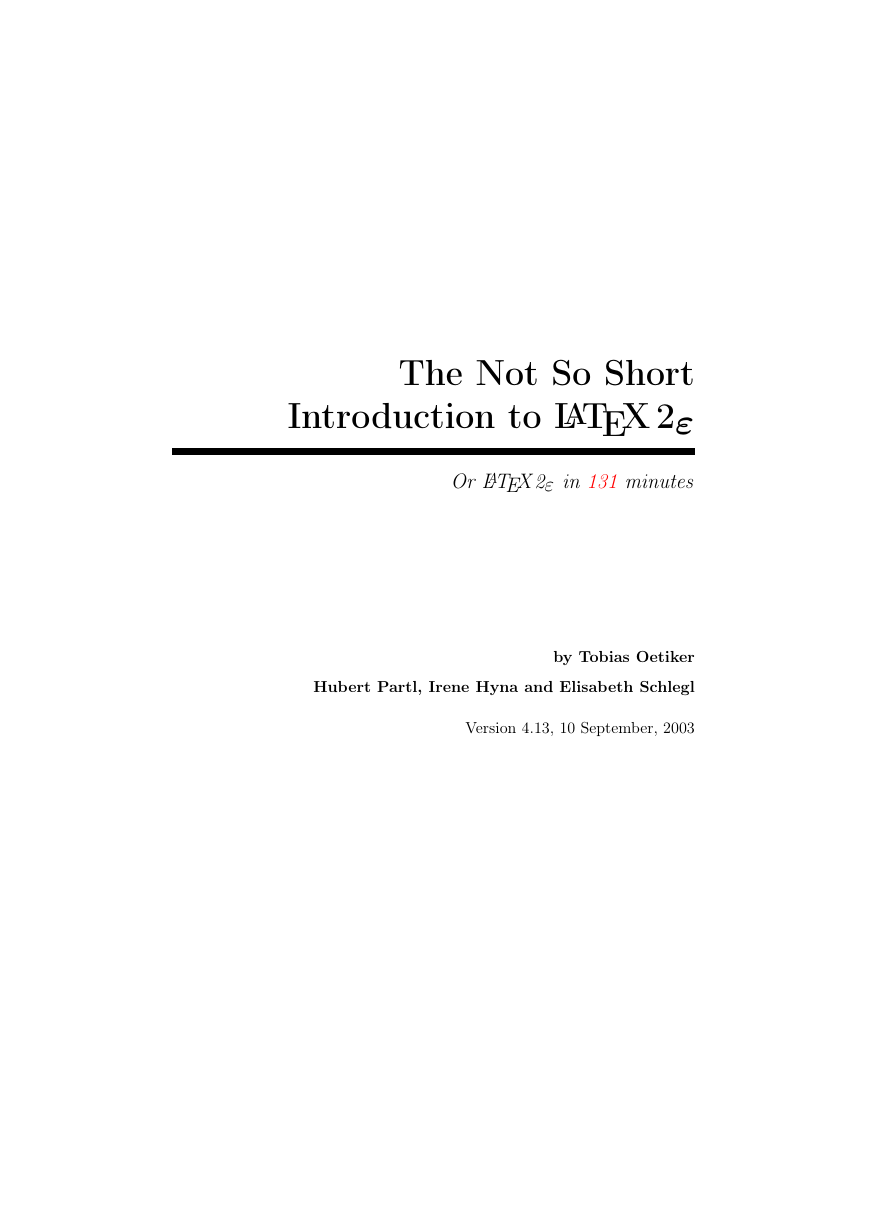

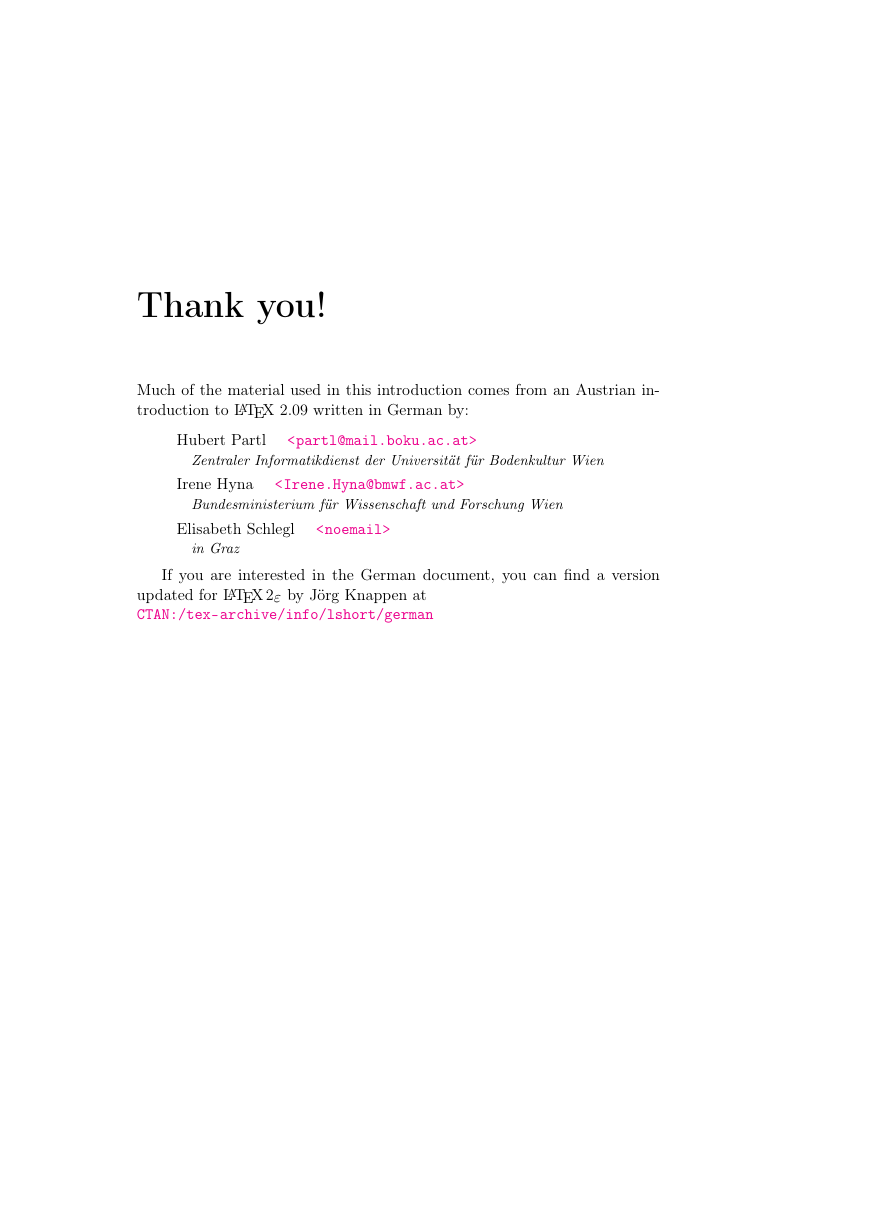
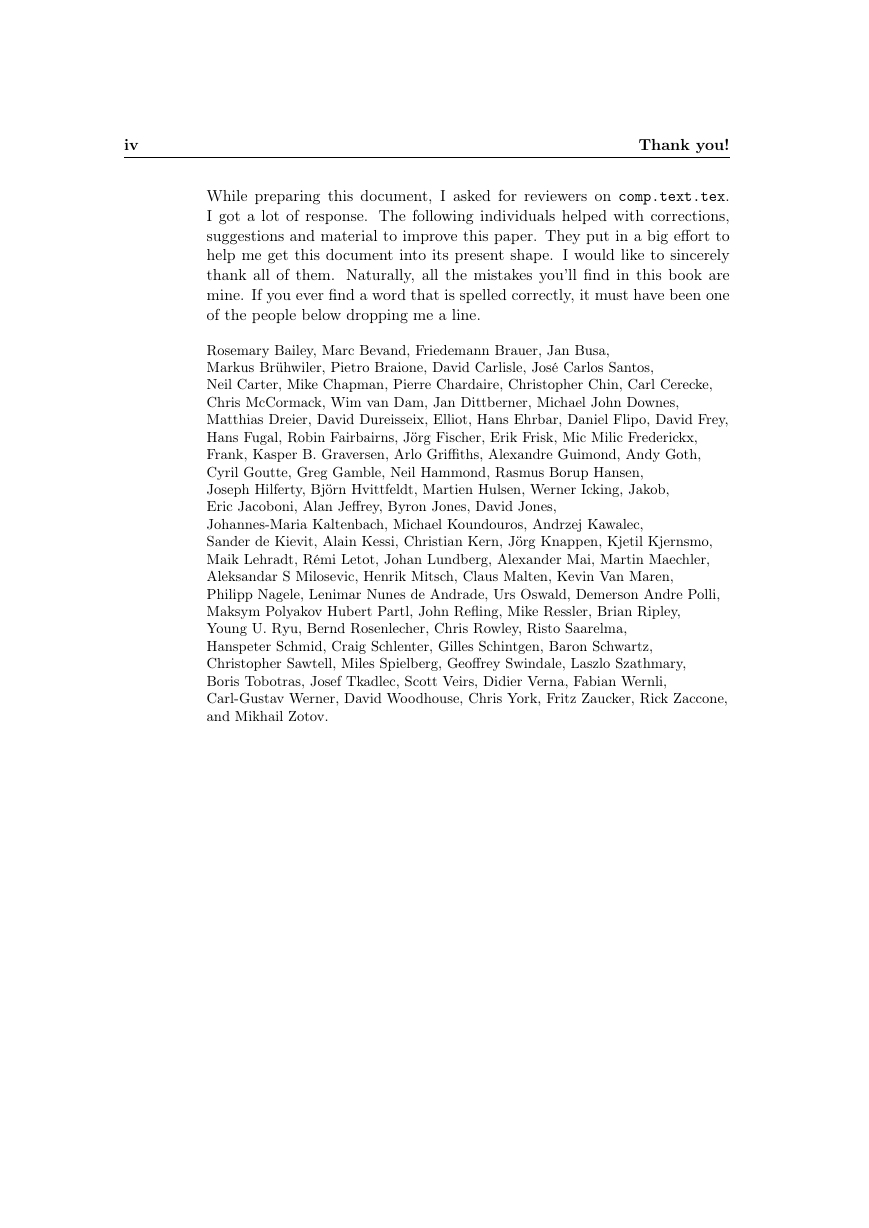
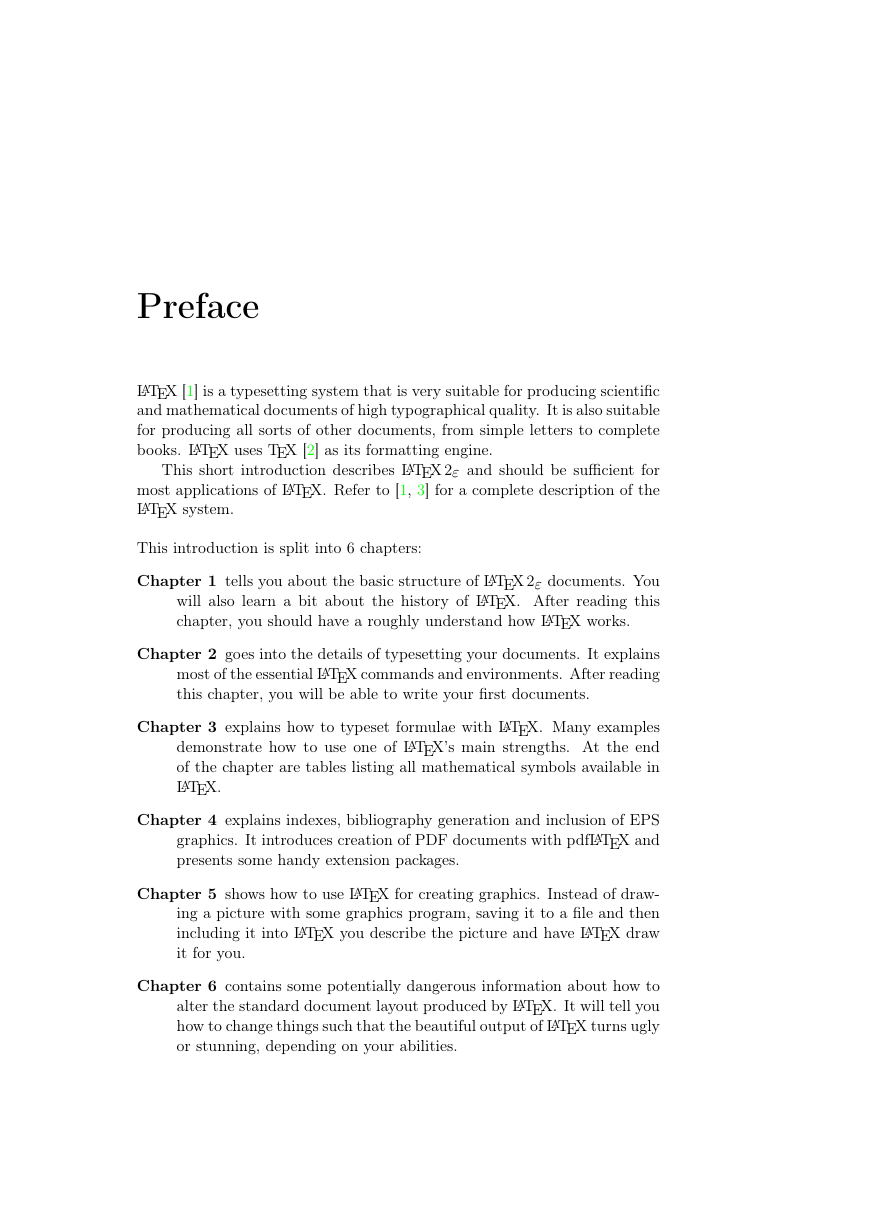

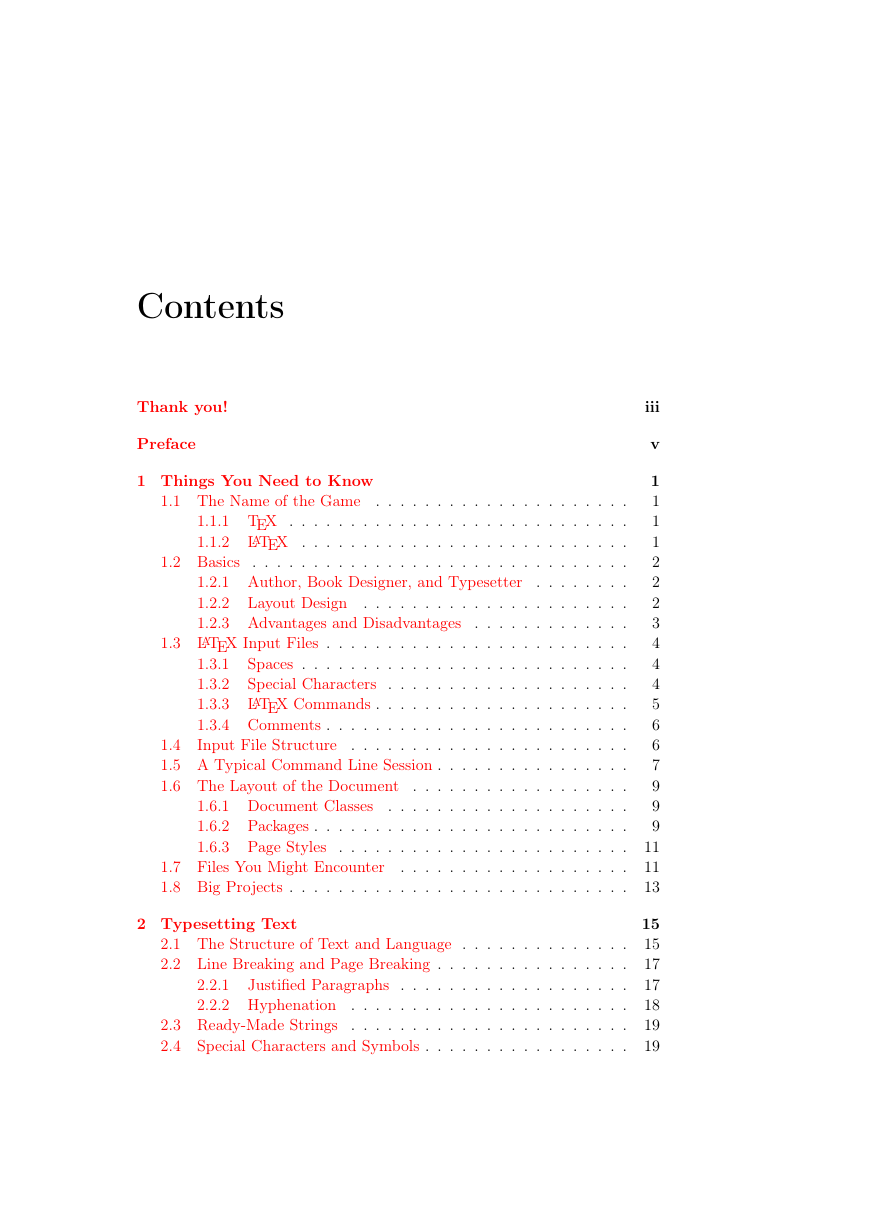
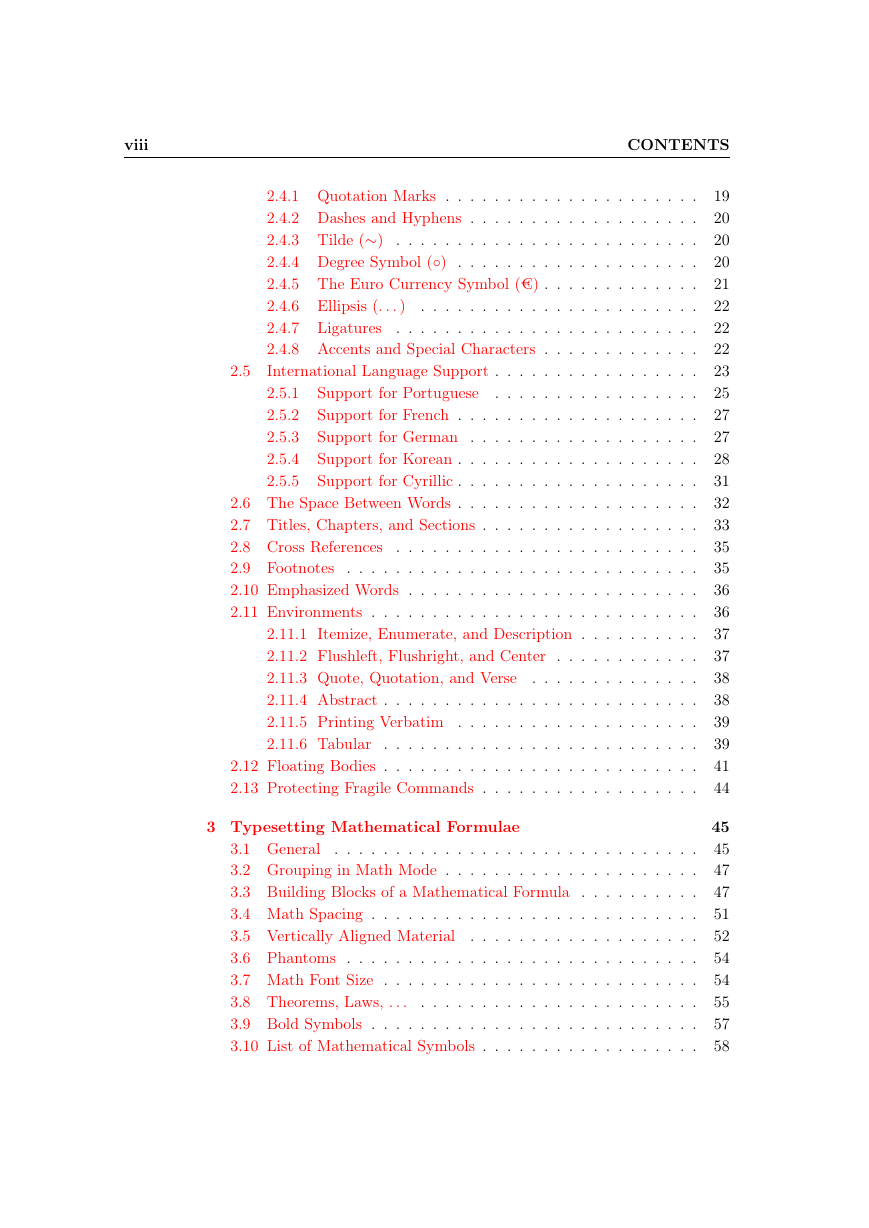








 2023年江西萍乡中考道德与法治真题及答案.doc
2023年江西萍乡中考道德与法治真题及答案.doc 2012年重庆南川中考生物真题及答案.doc
2012年重庆南川中考生物真题及答案.doc 2013年江西师范大学地理学综合及文艺理论基础考研真题.doc
2013年江西师范大学地理学综合及文艺理论基础考研真题.doc 2020年四川甘孜小升初语文真题及答案I卷.doc
2020年四川甘孜小升初语文真题及答案I卷.doc 2020年注册岩土工程师专业基础考试真题及答案.doc
2020年注册岩土工程师专业基础考试真题及答案.doc 2023-2024学年福建省厦门市九年级上学期数学月考试题及答案.doc
2023-2024学年福建省厦门市九年级上学期数学月考试题及答案.doc 2021-2022学年辽宁省沈阳市大东区九年级上学期语文期末试题及答案.doc
2021-2022学年辽宁省沈阳市大东区九年级上学期语文期末试题及答案.doc 2022-2023学年北京东城区初三第一学期物理期末试卷及答案.doc
2022-2023学年北京东城区初三第一学期物理期末试卷及答案.doc 2018上半年江西教师资格初中地理学科知识与教学能力真题及答案.doc
2018上半年江西教师资格初中地理学科知识与教学能力真题及答案.doc 2012年河北国家公务员申论考试真题及答案-省级.doc
2012年河北国家公务员申论考试真题及答案-省级.doc 2020-2021学年江苏省扬州市江都区邵樊片九年级上学期数学第一次质量检测试题及答案.doc
2020-2021学年江苏省扬州市江都区邵樊片九年级上学期数学第一次质量检测试题及答案.doc 2022下半年黑龙江教师资格证中学综合素质真题及答案.doc
2022下半年黑龙江教师资格证中学综合素质真题及答案.doc